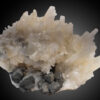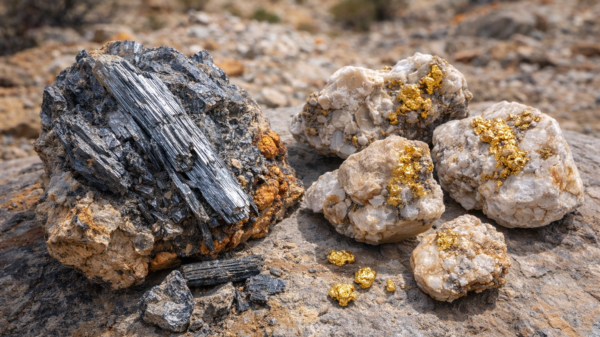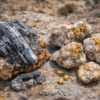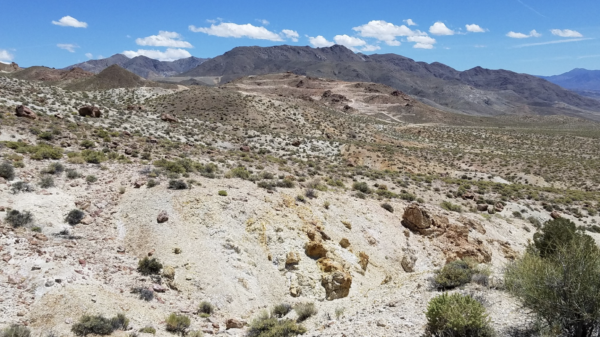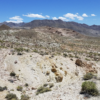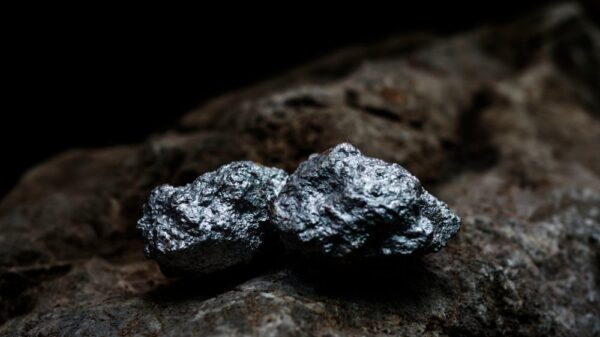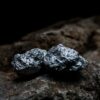One of the world’s largest mining corporations has now located a potentially dangerous radioactive item that fell off of one of its trucks after searching for approximately seven days.
Earlier this month, Rio Tinto Ltd (ASX: RIO) (LON: RIO) lost a radioactive capsule that was used as part of an industrial gauge for measuring iron ore feed at its Gudai-Darri mining site in Australia. The capsule is believed to have fallen off of a company truck on the outskirts of Perth and according to Reuters, it was lost sometime in mid-January.
The gauge containing the capsule was picked up by Rio Tinto on Jan. 12 and the company realized it was missing on Jan. 25 when they inspected it. Local authorities said the vibration from the truck transporting the device caused screws and bolts to loosen and that the capsule inside the gauge then slipped out of a gap in the bottom of the truck and onto the road.
The tiny device containing the radioactive isotope Caesium-137 could have caused radiation burns and sickness to anyone who had the misfortune of picking it up. Thankfully, the company has now located the device with the help of Australia’s Department of Fire and Emergency Services (DFES), the Australian Defence Force, the Australian Radiation Protection and Nuclear Safety agency and others.
Rio Tinto’s Chief Executive, Iron Ore — Simon Trott, provided a statement apologizing on behalf of the company and commending those involved in recovering the device to Reuters.
Rio Tinto said it will investigate how a radioactive capsule used to measure iron ore feed was lost in the vast Australian Outback, after authorities located it following a week-long search https://t.co/XgvTSOklD5 pic.twitter.com/BFwMA5QHWw
— Reuters (@Reuters) February 1, 2023
Read more: NevGold Corp. gets exploration notice approval from Bureau of Land Management
Read more: NevGold should be trading at a premium to peers: Analysis
“This sort of incident is extremely rare in our industry, which is why we need to investigate it thoroughly and learn what we can to ensure it doesn’t happen again,” added Trott in a news release from the company.
“As part of our investigation, we will be assessing whether our processes and protocols, including the use of specialist contractors to package and transport radioactive materials, are appropriate.”
The device was correctly identified by its serial number and the search for it spanned about 1,400 kilometres in the Australian outback.

Rio Tinto’s radioactive capsule device. Photo by the Western Australian government’s Department of Fire & Emergency Services via Twitter
“We have essentially found the needle in the haystack,” said DFES Commissioner Darren Klemm in a news release.
“When you consider the challenge of finding an object smaller than a 10-cent coin along a 1400-kilometre stretch of Great Northern Highway, it is a tremendous result,” he added.
According to Chief Health Officer of Western Australia Dr. Andrew Robertson, standing one metre away from the capsule for a 1-hour period would result in the equivalent of receiving 10 X-rays and one would have to be quite close to the device to receive a harmful dose of radiation.
He said the chances of anyone being contaminated by it were very low despite the severity of the situation and scale of the search.
The device is now on its way to a secure storage facility owned by Western Australia’s Department of Health.
Chief Health Officer and Radiological Council Chair Dr Andrew Robertson and DFES Incident Controller A/Superintendent Darryl Ray updated media today on the located radioactive source – now en route to a secure @WAHealth radiation storage facility.@dfes_wa @CHO_WAHealth pic.twitter.com/iBp5kWVx7b
— WA Health (@WAHealth) February 2, 2023
Read more: NevGold starts drilling at Nutmeg Mountain property
Read more: 2023 will be a ‘very strong’ year for gold mining: NevGold
Rio Tinto’s stock price dropped by 2.34 per cent today to AUD$125.43 on the Australian Securities Exchange.
rowan@mugglehead.com




